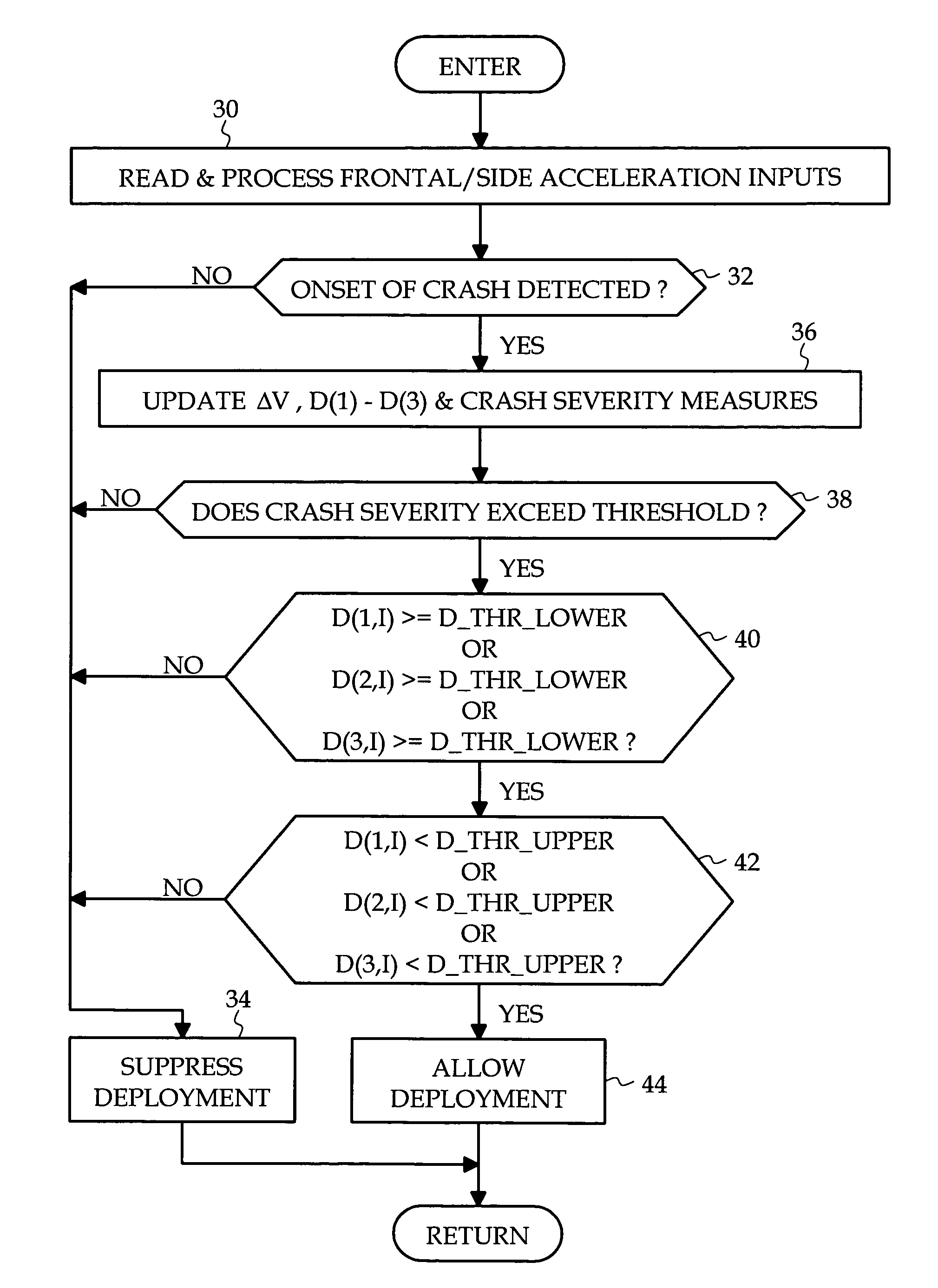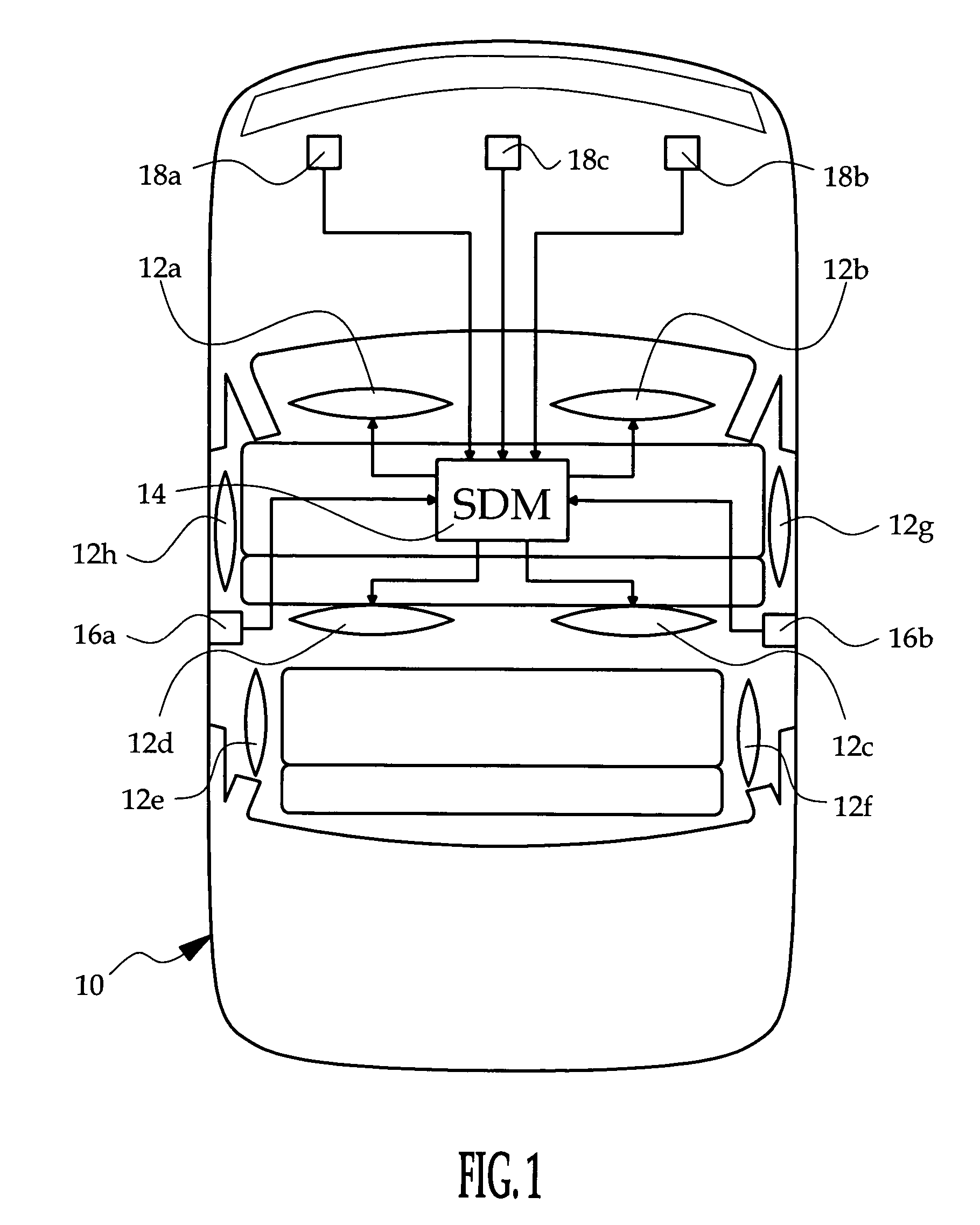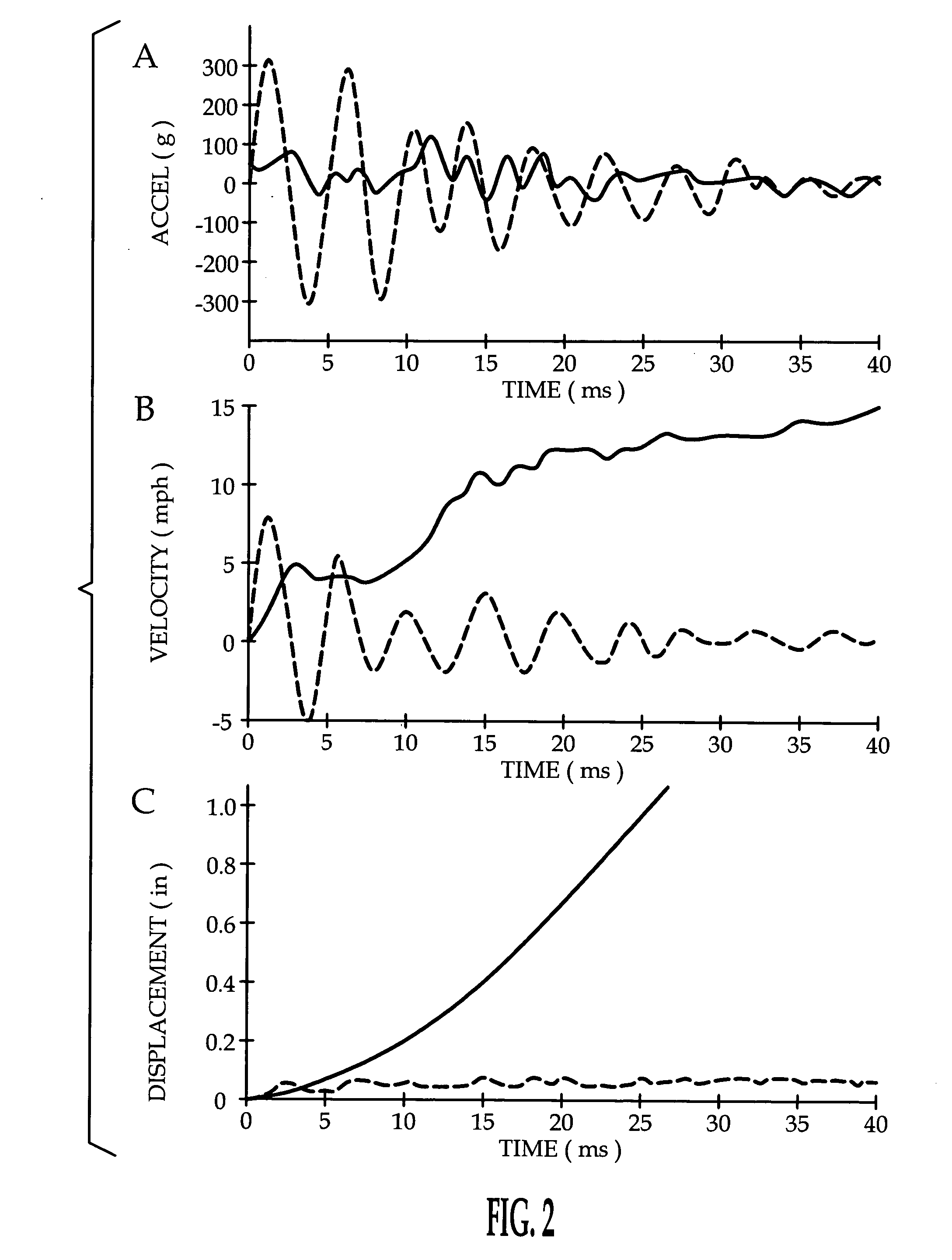Supplemental restraint deployment method with displacement-based deployment immunity
a technology of supplemental restraints and deployment immunity, which is applied in the direction of process and machine control, pedestrian/occupant safety arrangement, instruments, etc., can solve the problems of difficult to reliably distinguish between deployments, heuristic in nature rather than physics-based, and complicated natur
- Summary
- Abstract
- Description
- Claims
- Application Information
AI Technical Summary
Benefits of technology
Problems solved by technology
Method used
Image
Examples
Embodiment Construction
[0009]FIG. 1 generally depicts a supplemental restraint system installed in a vehicle 10. The restraint system includes a number of restraints 12a, 12b, 12c, 12d such as air bags that are variously deployed in a severe crash event to protect the vehicle occupants. The restraints may include without limitation, air bags, belt pretensioners, inflatable tubular structures, side curtains, anti-whiplash devices, etc., and it will be understood that the term airbag as used herein does not refer exclusively to a particular type of restraint. A deployment control module (SDM), designated generally by the reference numeral 14, is mounted on a frame element in a central portion of the vehicle 10. In the illustrated embodiment, the restraint system includes a longitudinal acceleration sensor within the SDM 14, a pair of side impact acceleration sensors 16a, 16b and three electronic frontal acceleration sensors 18a, 18b, 18c. The SDM 14 additionally includes a programmed microprocessor for rece...
PUM
 Login to View More
Login to View More Abstract
Description
Claims
Application Information
 Login to View More
Login to View More - R&D
- Intellectual Property
- Life Sciences
- Materials
- Tech Scout
- Unparalleled Data Quality
- Higher Quality Content
- 60% Fewer Hallucinations
Browse by: Latest US Patents, China's latest patents, Technical Efficacy Thesaurus, Application Domain, Technology Topic, Popular Technical Reports.
© 2025 PatSnap. All rights reserved.Legal|Privacy policy|Modern Slavery Act Transparency Statement|Sitemap|About US| Contact US: help@patsnap.com



